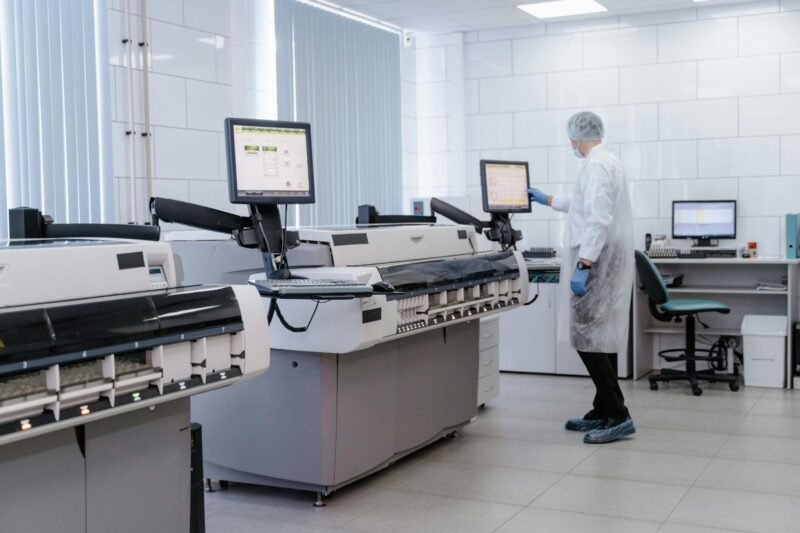
You’re starting your emergency room (ER) shift when a pediatric emergency arrives. It’s high-pressure, fast-moving, and exactly the kind of situation you’ve trained for. In moments like this, your PALS certification isn’t just a requirement. It’s what helps you stay focused and confident in taking the right steps.
That’s why so many hospitals require ER staff to complete Pediatric Advanced Life Support (PALS) training. Whether you’re a nurse, physician, or advanced practice provider, having PALS means you’re ready to step in when seconds matter most.
In this guide, we’ll walk through how the AHA PALS online course meets hospital requirements, what the training involves, and why it’s such an important part of being fully prepared for pediatric cases in the ER.
What Makes the AHA PALS Online Course Stand Out
Let’s go over why the AHA PALS online course stands out from other programs. You don’t just learn the information. You also practice it until you’re confident:
Blended Learning Approach: You study online at your own pace, then practice hands-on skills with an instructor.
Based on the Latest Guidelines: The course follows current AHA protocols for pediatric assessment, breathing issues, shock, and arrhythmias.
Real-Life Simulations: Video scenarios help you practice decision-making, leadership, and quick patient assessment.
Teamwork Training: You learn how to assign roles, communicate clearly, and lead resuscitation teams effectively.
Instant Feedback During Practice: Real-time feedback corrects your CPR technique as you train, helping you build proper habits.
What You’ll Learn in the AHA PALS Online Course
Let’s break down what you’ll learn in the Pediatric Advanced Life Support (PALS) course. Each part focuses on handling serious pediatric emergencies that you may face while providing care:
Pediatric CPR for Infants and Children
You’ll learn how to perform high-quality cardiopulmonary resuscitation (CPR) for infants and children. The techniques differ depending on the child’s age.
AED Use and Airway Management
You’ll practice using automated external defibrillators (AEDs) on children and infants correctly. This includes placing the pads correctly and setting the right energy dose. You’ll also cover airway management, like bag-mask ventilation, endotracheal intubation, and using supraglottic devices.
Recognition and Treatment of Respiratory Distress, Shock, Arrhythmias, and Cardiac Arrest
You’ll learn how to spot early signs of respiratory failure, which causes a number of pediatric arrests. Acting early gives you a chance to stabilize the child before full arrest happens. This part covers:
- How to identify upper and lower airway distress?
- How to manage different types of shock: hypovolemic, distributive, cardiogenic, and obstructive?
- How to recognize and treat bradycardia, tachyarrhythmias, and pulseless rhythms?
Team Dynamics and Communication During Emergencies
You’ll practice how to work as part of a team during emergencies. This includes using closed-loop communication, being clear about roles, and showing leadership.
Be Prepared: Online Prep Tools
Before your PALS skills check, you need to know if you’re ready. These two online tools can help you sharpen your knowledge:
PALS Precourse Self-Assessment
This checks your basics before hands-on practice:
- Algorithms: Covers pediatric emergencies like Cardiac Arrest and Bradycardia. Following these protocols can help improve survival by up to 40% (PubMed Central, 2021).
- Pharmacology: Tests your drug knowledge, including correct epinephrine dosing (0.01 mg/kg IV/IO).
- Rhythm Recognition: Strengthens your ability to identify arrhythmias, so you don’t delay treatment.

By completing this assessment, you’ll know exactly which areas to review before your in-person skills session.
Interactive Megacode Simulations
These recreate full emergencies to build your skills:
- Decision-Making: High-fidelity practice boosts correct actions by a significant amount.
- Team Practice: Sharpens leadership and communication.
- Instant Feedback: Corrects your technique right away.
Get Ready for Pediatric Emergencies with PALS
Pediatric emergencies move fast. You need to act quickly and know exactly what to do. The AHA PALS Online Course helps you build that confidence. You get self-paced lessons, real-life simulations, ECG rhythm recognition, and hands-on skills checks. This training doesn’t just check a box for hospital requirements. It gives you real skills you can use in the moment. If you want to feel fully prepared during pediatric codes, enroll today in PALS Certification with Pediatric Emergency Scenarios. Take the next step in your care training.












